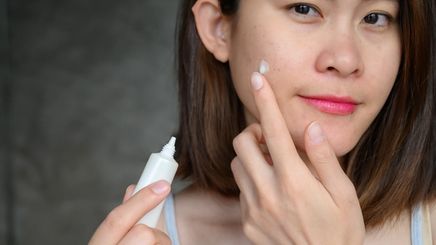
Cystic acne: It’s one of the most painful types of acne one could get, and it’s impossible to ignore. If you have a pimple that’s unusually large, pus-filled, and tender to the touch, it could be cystic acne — but don’t take our word for it. Because of its severity, cystic acne is best treated by an expert who can prescribe the best possible course of treatment and at-home care.
We interviewed a Skin Expert at Unilever to get more answers. She is the R&D Manager for Skincare at Unilever Philippines who previously worked at the Global R&D Design Center in Shanghai, China.
Here, she explains what cystic acne is as well as how to treat it.
What is Cystic Acne?
POND’S SKIN EXPERT: Cystic acne is the most serious form of acne. It is severely inflamed acne in sac-like nodules. Acne cysts are sometimes referred to as nodulocystic acne, and people suffering from this type of severe acne should seek medical care.
What’s the difference between cystic acne and other types of acne?
- Typical classification of acne includes non-inflamed lesions ( and blackheads) and inflamed lesions. There are different grades of inflamed lesions, and cystic acne is the most severe form. The typical grade of inflamed acne are:
- Pimples and bumps – small, red, tender bumps (papules), some with pus at the tips (pustules)
- Large, painful lumps – either solid (nodules) or filled with pus (cystic lesions).
How and when does it happen?
There are many factors that influence and/or severity, like genetic factors, stress, lack of sleep, hormonal imbalance, and poor skin hygiene, among others.
Young people, in particular, go through lots of hormonal changes that cause their oil glands to become overactive. The extra oil can clog pores where bacteria can grow, causing redness, swelling, and pus. If mild acne is not treated immediately, an infection may occur. If the infection is still not treated, the inflammation can become worse and lead to more serious forms like cystic acne.
Can you share ways on how to treat cystic acne?
Treatment of acne, in general, should be started as early as possible to minimize the risk of inflammation, developing into a more advanced type like nodules or cystic, and to minimize the risk of scarring. If pimples develop into cystic acne, treatment by a medical professional should be sought.
How do you help prevent cystic acne? How do you refrain it from coming back?
Early treatment is key to ensuring the best outcomes and reducing the chance of coming back. A multifactorial approach needs to be taken and includes consideration of lifestyle factors, skin sensitivity, diet, personal care hygiene, etc. The use of proper cleansing products with antibacterial and oil control properties can help reduce the chance of aggravating mild acne conditions.
Are there foods or habits we should avoid preventing cystic acne?
There are published studies showing Westernized nutrition with a high intake of hyperglycaemic carbohydrates, milk, saturated fats, and trans-fatty acids have an impact on growth factors that influence acne severity.
What skincare routine do you recommend for people who get cystic acne?
Cystic acne is a severe acne lesion that needs medical attention. Early treatment is essential to manage mild acne conditions to prevent them from developing into a more severe condition. Proper skin cleansing using cleansers with oil control and anti-acne properties, such as POND’S Bright Miracle Ultimate Acne Control Facial Foam can help prevent the onset of pimples and exacerbation of the existing condition.
How early can women start following a skincare routine?
Typically, skin concerns, especially pimples, start during adolescence. This is the time young girls can begin following a skincare routine. It can be a simple cleansing routine that can evolve, depending on the individual’s skin needs and lifestyle.
Suffering from cystic acne? Take the advice of the POND’S Skin Expert and start observing a proper skincare routine with suitable acne-fighting products and ingredients. To know more, read our article on the different .